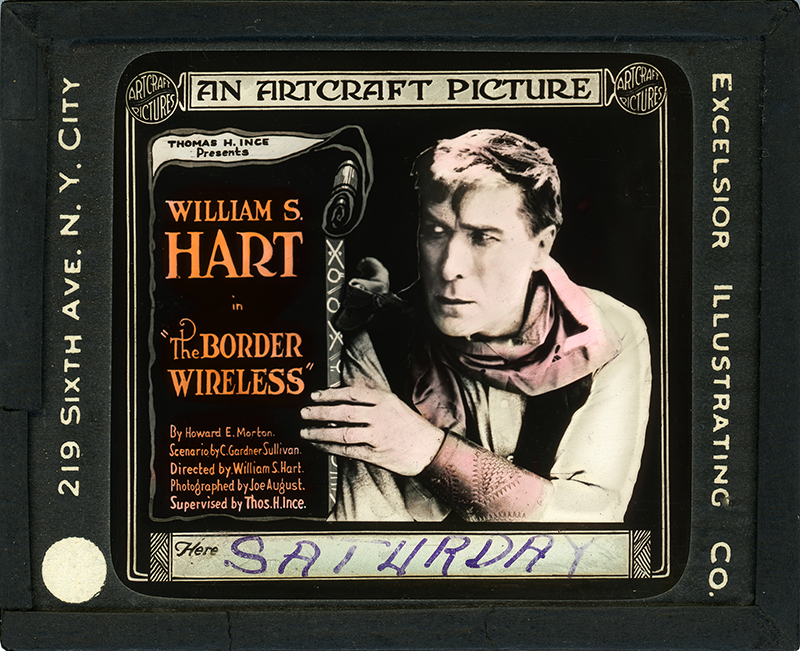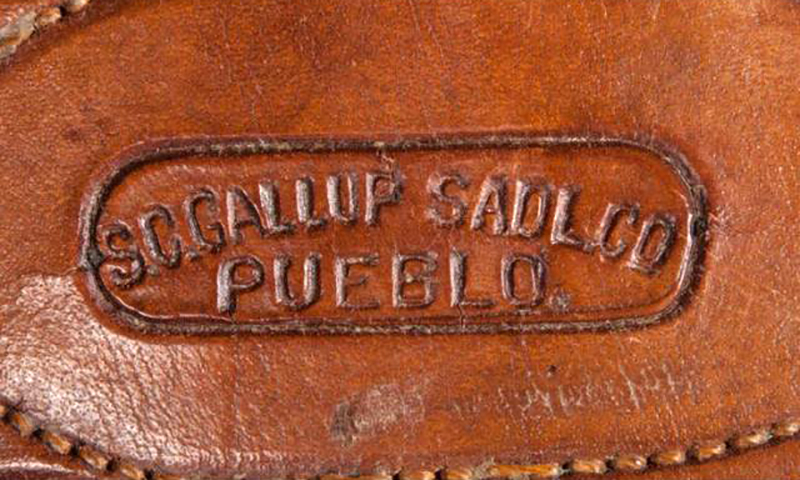|
|


Click image to enlarge
| Download original composite scan
About "The Border Wireless." From Koszarski (1980:98): Produced by William S. Hart Productions; advertised as "supervised by Thomas H. Ince;" distributed by Paramount-Artcraft; released October 8, 1918; © September 10, 1918; five reels (4353 feet). Directed by William S. Hart; screenplay by C. Gardner Sullivan from a story by Howard E. Morton; photographed by Joe August; art director, Thomas A. Brierley; art titles by Irwin J. Martin. CAST: William S. Hart (Steve Ransom); Wanda Hawley (Elsa Miller); Charles Arling (Herman Brandt); James Mason (Carl Miller); E. von Ritzen (Frederick Schloss); Bertholde Sprotte (Von Helm); Marcia Manon (Esther Meier). SYNOPSIS: German agents have put up a wireless at Magdalene mine, where they send code messages into Mexico and thence to Berlin. Brandt, one of the agents, suspects Steve Ransom, a cow-puncher, of too great loyalty to the United States and investigates his record. He finds that Steve is a fugitive from justice and wires to the army post where Steve has gone to enlist. Steve overhears the officer taking the message and escapes. He wishes to say goodbye to his sweetheart before leaving the community and makes a daring try. On the way he finds a messenger who has been thrown from his horse and who while in a semi-conscious state overheard Brandt and his conspirators plotting to send a wireless to sink the boat on which General Pershing and his staff are sailing. With the girl who has discovered the messenger's riderless horse and come to his rescue, Steve goes to the Magdalene mine and holds the German spies at bay until relief comes from the army post. He also wins the girl. [Exhibitor's Trade Review, September 28, 1918] REVIEWS: Timely subject matter of a sensational nature and a new characterization by Hart will carry this picture over to success. Still an outlaw, a price on his head for manslaughter, Hart is grim-visaged only at intense moments. He actually smiles and conducts himself during courtship with a rare sense of humor, instead of taking himself too seriously. ... [Louis Reeves Harrison, Moving Picture World, October 12, 1918.] William S. Hart needs a change of subjects. The sameness of his pictures is beginning to tell. ... Why does not Hart turn his faithful horse out to pasture for an indefinite period, hang up his sombrero and six-shooters, put on store clothes — even a dress suit — and go in for another type of drama? ... So fine an actor, so forceful a personality would carry his following with him even though stripped of all his familiar trappings. ... Largely because of Hart's great success in Western pictures, that kind of photoplay has been done almost to death. He has had a host of imitators ... there have been so many features of this kind that they are beginning to pall. Only one of exceptional merit now gives the old thrill, and they are few and far between. [S. M. Weller, New York Review, August 1918.]
LW3706: 9600 dpi jpeg from magic lantern slide purchased 2020 by Leon Worden.
|
WATCH FULL MOVIES
Biography
(Mitchell 1955)
Narrated Biopic 1960
Biography (Conlon/ McCallum 1960)
Biography (Child, NHMLA 1987)
Essay: The Good Bad Man (Griffith & Mayer 1957)
Film Bio, Russia 1926
The Disciple 1915/1923
The Captive God 1916 x2
The Aryan 1916 x2
The Primal Lure 1916
The Apostle of Vengeance (Mult.)
Return of Draw Egan 1916 x2
Truthful Tulliver 1917
The Gun Fighter 1917 (mult.)
Wolf Lowry 1917
The Narrow Trail 1917 (mult.)
Wolves of the Rail 1918
Riddle Gawne 1918 (mult.)
"A Bullet for Berlin" 1918 (4th Series)
The Border Wireless 1918 (Mult.)
Branding Broadway 1918 x2
Breed of Men 2-2-1919 Rivoli Premiere
The Poppy Girl's Husband 3-23-1919 Rivoli Premiere
The Money Corral 4-20-1919 Rialto Premiere
Square Deal Sanderson 1919
Wagon Tracks 1919 x3
Sand 1920 Lantern Slide Image
The Toll Gate 1920 (Mult.)
The Cradle of Courage 1920
The Testing Block 1920:
Slides, Lobby Cards, Photos (Mult.)
O'Malley/Mounted 1921 (Mult.)
The Whistle 1921 (Mult.)
White Oak 1921 (Mult.)
Travelin' On 1921/22 (Mult.)
Three Word Brand 1921
Wild Bill Hickok 1923 x2
Singer Jim McKee 1924 (Mult.)
"Tumbleweeds" 1925/1939
Hart Speaks: Fox Newsreel Outtakes 1930
|
The site owner makes no assertions as to ownership of any original copyrights to digitized images. However, these images are intended for Personal or Research use only. Any other kind of use, including but not limited to commercial or scholarly publication in any medium or format, public exhibition, or use online or in a web site, may be subject to additional restrictions including but not limited to the copyrights held by parties other than the site owner. USERS ARE SOLELY RESPONSIBLE for determining the existence of such rights and for obtaining any permissions and/or paying associated fees necessary for the proposed use.











































